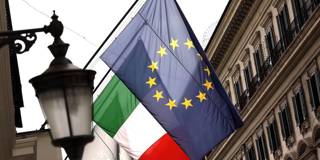Though Euroskeptics have failed to form a new Italian government, both Italy and the European Union are entering a new phase of deep uncertainty. In the absence of a robust growth agenda that addresses Italy's structural economic weaknesses, another euro crisis could be in the offing – and this one would be far worse than the last.
MILAN – Since the populist Five Star Movement and the right-wing League captured a combined parliamentary majority in Italy’s March 4th election, Italian politics has been at an impasse, with the two parties struggling to form a government. But now, with President Sergio Mattarella having rejected a M5S/League proposal to appoint the staunchly Euroskeptic economist Paolo Savona as Minister of Economy and Finance, the situation has taken a dramatic turn.

MILAN – Since the populist Five Star Movement and the right-wing League captured a combined parliamentary majority in Italy’s March 4th election, Italian politics has been at an impasse, with the two parties struggling to form a government. But now, with President Sergio Mattarella having rejected a M5S/League proposal to appoint the staunchly Euroskeptic economist Paolo Savona as Minister of Economy and Finance, the situation has taken a dramatic turn.